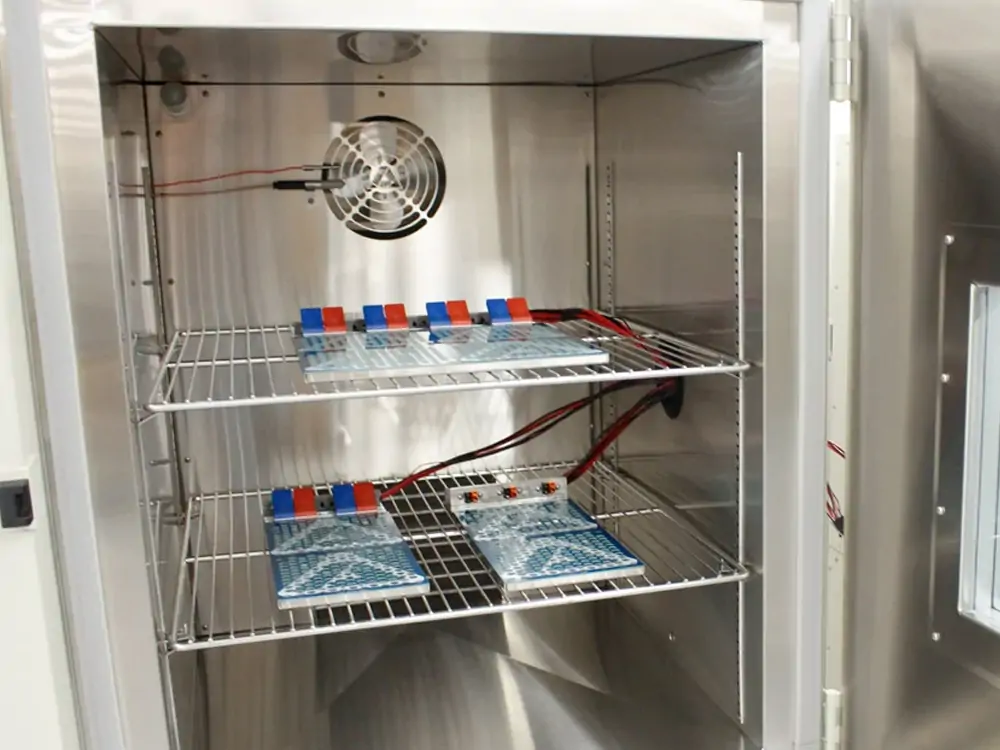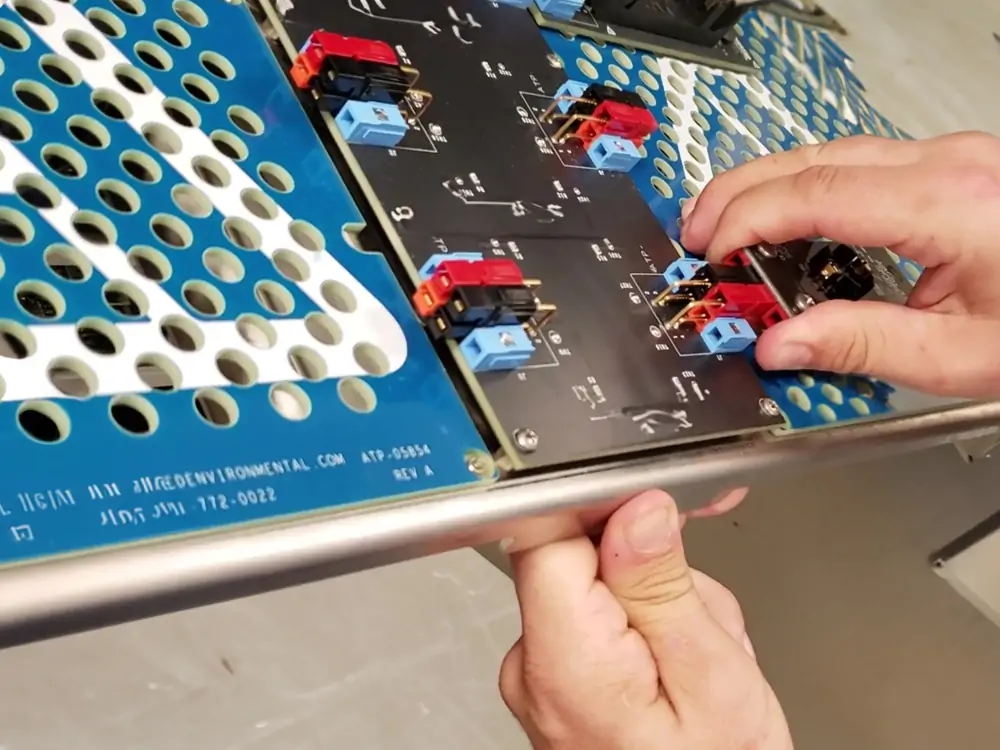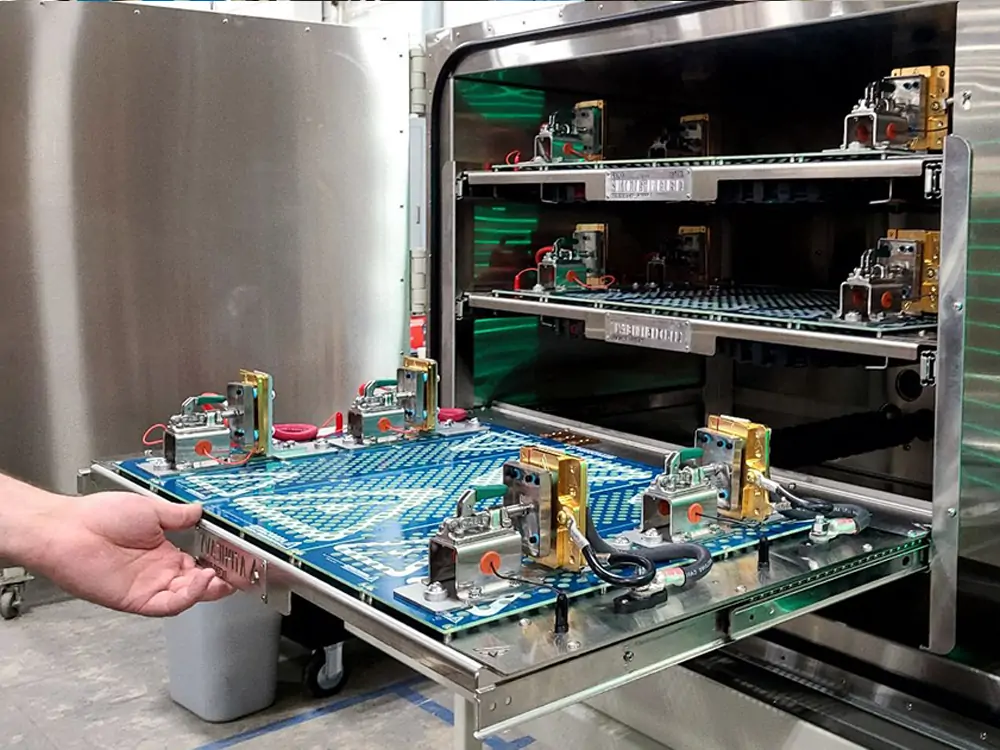Batteries’ usefulness has revolutionized the world. From smartphones to airplanes, they make our lives easier. However, minor defects in batteries can cause us to pay a heavy price. Therefore, the manufacturers test them in specialized chambers. But the question is: How does the battery test chamber work?
Manufacturers always test batteries before they go for sale. It helps them check durability, longevity, and performance. Minor defects in batteries can lead to many issues, including battery explosions. These batteries are tested under controlled chambers. Let’s dive deeper and discuss those battery chambers and their workings.
Overview of Battery Tests Chambers

Battery test chambers simulate the real-world environment. The battery in these chambers feels the temperature as if it is outside the environment. So, the engineers understand how the battery will perform when it goes out in public.
These chambers are very controlled and offer adjustability to conditions. For example, you can increase or decrease the temperature. You can also adjust humidity, and pressure. In other words, you can go from one extreme environment to another. Such conditions help to analyze the performance of the battery.
You can even set the temperature to high for a small cycle. This adjustment helps you know how the battery will behave when exposed to extreme sun heat. Moreover, you can keep the battery at a high temperature for an extended period. It shows what will happen if the battery is stored in hot conditions. These chambers give detailed reports that engineers need.
Importance of Battery Tests Chambers

Almost every industry uses lithium-ion batteries. They are very durable and have a long discharge time. They are standard for small smartphones, cars, and airplanes. But what if a battery fails or explodes while in use? How bad would it be for the manufacturers who made it?
To avoid such unwanted conditions, manufacturers test their batteries extensively. This helps them know the battery’s performance when it goes out in public. If a battery fails in the test chamber, it is then improved. The engineer knows the battery’s weaknesses and defects through testing.
Test chambers can evaluate performance, durability, lifetime, and discharge time. These factors are crucial for defining the success of any battery. If a manufacturer’s battery fails in public, he faces many issues. However, by using test chamber testing, they can ensure each product is ready to use.
Principle of a Battery Test Chamber
The battery test chamber is based on simulating real-world conditions. The chambers provide the environment that a battery typically faces when it goes out. It also allows a sudden increase or decrease in temperature for accidental conditions.
This testing is reliable because it is done at the ideal temperature and humidity. The battery test chamber has many components. For example, there is a dedicated temperature control system, which you can adjust. The humidity and pressure systems are also helpful. Each component works to provide the battery with a real-world environment.
Working & Mechanism of Battery Testing Chambers

As you know, the battery test chambers simulate a battery’s actual conditions. But the question is: how? The answer is this HOW, which led us to write about the workings of these battery test chambers. There are three major working components, which are as follows:
- Temperature controls system
- Humidity control system
- Data Acquisition System
It is important to note that these three systems ensure standard battery testing. If a battery malfunctions in any of these systems, it will be considered a failure. The engineer will have to redo things and improve the battery. It will then be retested before going into the market. Let’s dive in and learn how these systems function.
1- Temperature Control System
The battery test chamber has heating resistors. It also has refrigeration units or liquid nitrogen for cooling. When the battery is placed, the operator can increase the temperature. The electrical resistor can provide as much heat as needed.
Similarly, when the heating is done, the battery is cooled. The refrigeration unit provides a cold environment for the chambers. This test is reliable because it offers extremely low and high temperatures. The battery’s behavior is tested for this fluctuation. The temperature first goes high and then reduces to a shallow level.
The question might arise: Why does heat or cooling not escape from the chamber? The answer is that the test chamber has excellent insulation. Due to this, the temperature inside does not increase or decrease. Thus, it tells us the exact behavior of the battery under different temperatures.
Quick Info: The battery testing chamber consists of a temperature-detecting sensor. These sensors provide the exact temperature present inside the chamber. So, the operator notices how a battery reacts at specific temperatures.
2- Humidity Control System
Batteries can be used in a humid environment as well. So, it is important to test them as per different humidity levels. First of all, the battery is taken to the humidity control system to test its performance. It checks whether the battery remains in good shape or not. But the question is: How does the test chamber increase and decrease the humidity?
The test chamber consists of a humidifier and a dehumidifier. First of all, the humidifier increases humidity in the chamber. The battery faces this environment. The humidity sensors present in the chambers measure the humidity levels. Once the process is completed, the operator enables the dehumidifier.
Dehumidifiers remove all humidity. The battery experiences the harshest dryness, and its behavior is noted. Like temperature control, humidity control is also taken seriously. If a product malfunctions, it is considered unfit for the market.
3- Data Acquisition Systems
The battery is kept under extreme supervision in the test chamber. Its voltage, current, and pressure are measured continuously. The engineers aim to determine whether temperature affects the battery’s voltage or current.
For this, the battery testing chamber consists of different sensors. These sensors log data on voltage, current, pressure, and more. This helps manufacturers know whether the battery is working with full power. If a battery passes this test, it is considered reliable and ready to go out in the market is deemed reliable.
Type of Battery Testing in Chamber
The primary types of testing are for temperature and humidity. However, there are a few other parameters that can be tested via chambers as well. Their purpose is to ensure the reliability of the testing and battery. Those are as follows:
- Shock Tests
- Vibration Tests
- Overcharge Tests
- Short Circuit Tests
- Mechanical Testing
- Charge/Discharge Cycles
The batteries undergo all the tests mentioned above. Everything matters, including charging, discharging, vibration, and more. The testing in the chamber is very extensive and reliable. That’s why major battery manufacturers are adopting battery chamber testing.
Does Malfunctioning the Battery Affect the Chamber During Testing?
No, the battery testing chambers are very advanced. They are designed to detect battery malfunctions. For example, if a battery catches fire, the chamber detects and deals with this issue. Similarly, these chambers remain unaffected if the battery goes into explosion mode.
The technology in the battery test equipment has evolved. Each chamber consists of some essential elements. Those include:
- Ventilation Systems
- Explosion-Proof Design
- Fire Suppression Systems
The fire suppression system remains alert during the testing process. If the battery catches fire, it suppresses the fire immediately and saves the chamber. Similarly, the battery chamber design is also explosion-proof. Even in the worst-case scenario of an explosion, the chamber remains safe.
As I said earlier, the battery testing chamber is excellently insulated. However, it has sophisticated ventilation technology. The chamber detects unwanted gasses. It immediately removes them through the efficient ventilation system. This feature makes the chamber a safe and reliable option for testing purposes.
Lithium Ion Battery Test
There are different types of batteries available. Lithium-ion batteries are considered the most reliable. They excel excellently in everything from smartphones to vehicles. Their longevity and performance make them popular.
All the lithium-ion batteries are tested through these battery test chambers. No matter if they are small or large, each of them undergoes testing. Due to these tests, these lithium batteries are far better than other types.
The process of testing these batteries is similar to what I mentioned earlier. The battery is placed in the chamber. The operator adjusts temperature, pressure, humidity, and other parameters. As a result, engineers know the defect in them. They adjust the batter according to the severity of the defect.
Frequently Asked Questions
What is a battery test chamber?
A battery test chamber is a testing compartment of a machine. It offers or simulates various environmental conditions for extensive testing of batteries. The engineers test the performance, safety, and reliability of batteries.
How do battery test chambers control temperature?
These chambers control temperature using heating elements such as resistors. They control cooling through refrigeration units having liquid nitrogen. The thermal insulation and temperature sensors maintain and monitor the desired temperature.
Can leaking batteries cause explosions and fire incidents?
Yes, leaking batteries can cause explosions and fire incidents. The electrolyte in batteries can be highly flammable. That’s why battery test chambers have safety features. Examples include fire suppression and explosion-proof designs.
How do you tell if a lithium-ion battery is bad?
You can test the battery in the test chamber to identify the defects. However, this is usually done at the professional level. As a battery user, you can look for signs of bad conditions. Those signs include reduced capacity, longer charging times, overheating, swelling, or leakage.
Are battery test chambers used for all types of batteries?
Yes, battery test chambers can be used for various types of batteries. There are no limitations. Battery types typically tested are lithium-ion, nickel-metal hydride, lead-acid, etc.
Conclusion
There is no doubt that battery test chambers are super helpful. Due to their various benefits, their usage is becoming more common. Every manufacturer, from small to large, is adopting this type of testing. It helps the manufacturer improve their product before sending it to market.
However, understanding the workings of these battery test chambers is paramount. This guide covers all the details of how the battery test chambers work. We also explore the principle and testing of lithium-ion batteries. After reading this article, you know these tests’ ins and outs.